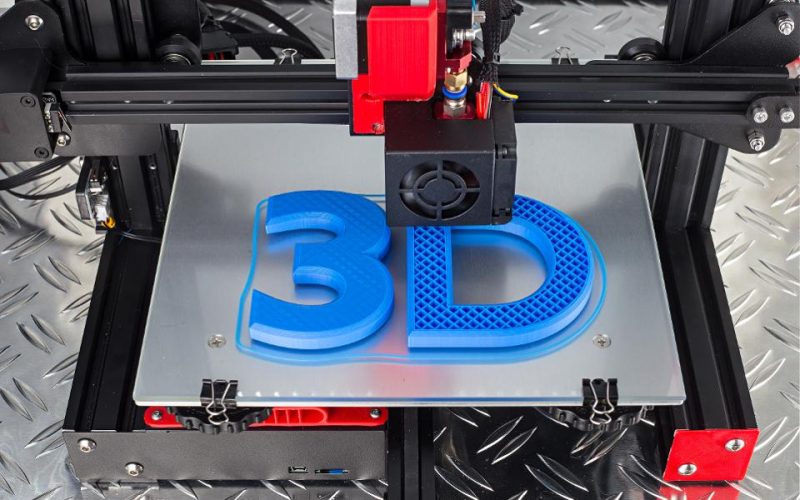The Future of 3D Printing: Consumer Applications
3D printing, also known as additive manufacturing, is revolutionizing the way we create and interact with objects. This technology enables the construction of three-dimensional objects from digital files, using materials like plastic, metal, and even biological substances. As 3D printing evolves, its consumer applications are expanding, promising significant impacts on various aspects of daily life. This article explores the future of 3D printing with a focus on its consumer applications, examining current trends, potential advancements, and the implications for society.

Current State of 3D Printing in Consumer Markets
Accessibility and Affordability
In recent years, 3D printers have become more accessible and affordable for consumers. Entry-level printers, which once cost thousands of dollars, are now available for a few hundred. This affordability has opened the door for hobbyists, educators, and small businesses to explore the potential of 3D printing.
Popular Consumer Applications
Currently, popular consumer applications of 3D printing include the creation of custom jewelry, home decor items, toys, and educational tools. Enthusiasts are using 3D printers to produce personalized products that are not readily available in stores, allowing for unique and customized designs.
Online Communities and Marketplaces
Online communities and marketplaces have sprung up to support the growing interest in 3D printing. Websites like Thingiverse and MyMiniFactory offer vast libraries of printable designs, enabling users to download and print items created by others or share their own creations.
Emerging Trends in 3D Printing for Consumers
Home Manufacturing
One of the most exciting trends in consumer 3D printing is the concept of home manufacturing. As printers become more sophisticated, consumers can manufacture complex items at home. This capability extends to household items, replacement parts, and even small-scale production runs of unique products.
Healthcare and Personal Care
The healthcare sector is seeing significant advancements with 3D printing. Consumers can now print custom prosthetics, orthotics, and even dental devices at a fraction of traditional costs. Personalized skincare and beauty products, tailored to individual needs, are also becoming a reality with 3D printing.
Food and Nutrition
3D printing technology is making its way into the kitchen, with the development of food printers capable of creating intricate and customized food items. These printers can cater to dietary restrictions and preferences, providing personalized nutrition options.
Fashion and Wearables
The fashion industry is embracing 3D printing to create bespoke clothing and accessories. From custom-fit shoes to intricately designed jewelry, 3D printing offers limitless possibilities for fashion innovation. This technology also allows for on-demand production, reducing waste and promoting sustainability.
Future Prospects of Consumer 3D Printing
Integration with Smart Home Technology
The integration of 3D printing with smart home technology is a promising future development. Imagine a smart home system that identifies a broken object and autonomously prints a replacement part. This seamless integration could transform home maintenance and reduce the need for external repair services.
Education and Creativity
3D printing is poised to play a significant role in education, fostering creativity and innovation among students. As schools increasingly incorporate 3D printing into their curricula, students can gain hands-on experience in design and engineering, preparing them for future careers in technology and manufacturing.
Sustainability and Eco-Friendliness
Sustainability is a key consideration for the future of 3D printing. The ability to produce items on demand reduces overproduction and waste. Additionally, advancements in biodegradable and recyclable printing materials are making 3D printing more environmentally friendly.
Customization and Personalization
The trend towards customization and personalization will continue to drive consumer interest in 3D printing. From custom-fit clothing to personalized healthcare solutions, the ability to tailor products to individual needs and preferences will be a major selling point for 3D printing technology.
Challenges and Considerations
Intellectual Property and Legal Issues
The rise of consumer 3D printing brings about intellectual property and legal challenges. The ease of replicating designs raises concerns about copyright infringement and the protection of proprietary designs. Addressing these issues will be crucial for the continued growth of consumer 3D printing.
Technical Barriers
Despite advancements, there are still technical barriers to widespread adoption of 3D printing. These include the complexity of design software, the need for specialized knowledge to operate printers effectively, and limitations in the range of printable materials. Overcoming these barriers will be essential for making 3D printing more user-friendly.
Cost and Accessibility
While the cost of 3D printers has decreased, high-quality printers and materials can still be expensive. Ensuring affordability and accessibility for a broader range of consumers will be important for the widespread adoption of 3D printing technology.
Safety and Quality Control
Safety and quality control are critical considerations in consumer 3D printing. Ensuring that printed objects are safe for use, particularly in applications like healthcare and food, is paramount. Establishing standards and regulations will help maintain quality and safety in consumer 3D printing.
Analysis Table: Current vs. Future Consumer Applications of 3D Printing
| Application | Current State | Future Prospects |
| Home Manufacturing | Custom household items, small-scale production | Autonomous home manufacturing, smart home integration |
| Healthcare | Custom prosthetics, orthotics, dental devices | Personalized medicine, bio-printing, on-demand drug printing |
| Food and Nutrition | Basic food items, custom shapes | Personalized nutrition, advanced food printing |
| Fashion and Wearables | Custom-fit shoes, bespoke clothing, accessories | Sustainable fashion, on-demand production, intricate designs |
| Education | Basic educational tools, introduction to 3D printing | Advanced STEM education, hands-on design and engineering |
| Sustainability | On-demand production, reduced waste | Biodegradable materials, circular economy models |
Comparative Table: Benefits and Challenges of 3D Printing for Consumers
| Aspect | Benefits | Challenges |
| Accessibility | Affordable printers, online design libraries | Technical complexity, limited material options |
| Customization | Personalized products, unique designs | Intellectual property concerns, legal issues |
| Healthcare | Lower cost prosthetics, personalized devices | Safety and quality control, regulatory standards |
| Sustainability | Reduced waste, on-demand production | Development of eco-friendly materials, ensuring recyclability |
| Education | Enhanced learning, hands-on experience | High initial costs, need for curriculum integration |
| Home Manufacturing | Convenience, reduced dependency on external suppliers | High-quality printer costs, technical knowledge requirement |
Conclusion
The future of 3D printing in consumer applications is bright, with immense potential to transform various aspects of daily life. From personalized healthcare solutions to innovative fashion and sustainable home manufacturing, the possibilities are vast. However, realizing this potential will require addressing technical, legal, and accessibility challenges. As technology advances and becomes more integrated into our lives, 3D printing is set to become a cornerstone of modern consumerism, offering unprecedented levels of customization, convenience, and sustainability.










